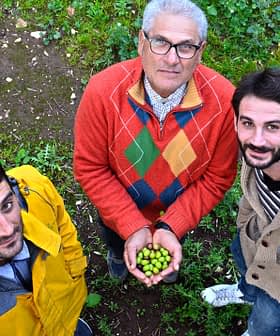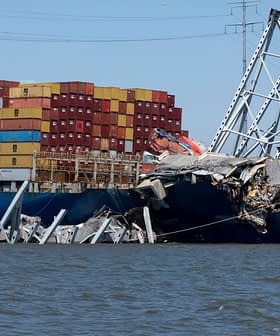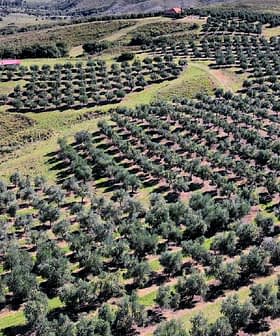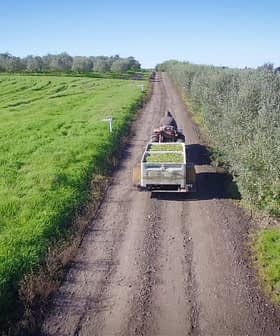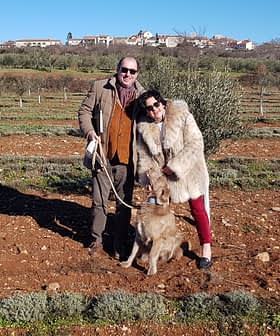Promoting Biodiversity, Improving Soil Health Are Key to Tackling the Global Water Crisis
Researchers in Italy argue that building more reservoirs is insufficient to combat the global water crisis; solutions must be found throughout the hydrological cycle.
As the global water crisis emerges as one of the most urgent issues related to climate change, the scientific community is expanding its efforts to work out practical solutions.
From this perspective, the Italian Center for River Restoration (CIRF) has proposed measures to address the nationwide lack of water, which could also be implemented globally.
It is clear that we will increasingly have to learn to live with the two extremes of long droughts and intense rainfall and consequent floods, which only a more natural territory and hydrographic network can cope with.
The current situation finds more than a quarter – 26.9 percent – of the European Union in a warning condition of drought and 10 percent in a state of alert, according to the latest data from the European Drought Observatory.
Nonetheless, in the first half of 2023, Italy received abundant rains, which even caused deadly flooding in the northern region of Emilia-Romagna.
See Also:European Bird Populations Threatened by Intensive Farming, Study FindsSince the equivalent of five to six months’ worth of rain fell in 40 days between May and the first half of June, the hydrology group of the National Research Council’s institute for geo-hydrological protection calculated that civil, agricultural and industrial use should be satisfied by the water reserves this summer in Italy. Though, a deficit of snow and water in the ground persists.
All this indicates the strict link between climate change, the increased frequency of extreme weather events and the intensification of the hydrogeological cycle.
“This condition must be considered in the context of the ongoing global climate and ecological crisis,” CIRF president Giuliano Trentini told Olive Oil Times. “Their primary cause is a decades-long pursuit of economic development that has ignored the ecosystemic constraints and is now leading to severe consequences, considering that more than 80 percent of natural habitats in Europe are in a poor state of conservation.”
CIRF researchers take into account that the continent has seen wetlands shrink by 50 percent since 1970, a reduction of fish and amphibian populations of 71 and 60 percent, respectively, in the last decade and a decline of bee and butterfly populations by one-third with one-tenth of these species on the verge of extinction.
“We must consider that, to overcome the water crisis, there is a hierarchy of issues to address,” Trentini said. “At the top stands the protection of biodiversity, and only at the end do we find technological solutions.”
“The first thing to consider is that human permanence on Earth requires biodiversity to be safeguarded,” he added. “Seen as a luxury by many, this is a primary necessity and implies that food production should be first and foremost sustainable. Starting from this premise, we can question how water is used.”
According to the United Nations, agriculture accounts, on average, for 70 percent of all freshwater use globally and even more in arid and semi-arid regions.
Estimates from the National Association of Consortia for the Management and Protection of Land and Irrigation Water (ANBI) show that in Italy, 14.5 billion cubic meters of water are used for agricultural purposes per annum, equal to 54 percent of total water use.
Farmers can therefore play a significant role in preserving water resources. In this regard, soil management emerges as a critical element.
“Considering the type of soil, its geology and slope, through micro-interventions in the farms, it is possible to slow down the water so that it infiltrates more,” Trentini said. “For example, just working the soil minimally and using the cover cropping method helps the soil have a greater capacity to retain water.”
“These and other highly effective actions are presented in the Natural Water Retention Measures (NWRM) platform drawn up by the European Commission’s Directorate General for Environment,” he added.
The measures proposed in the strategy are multi-functional, including intercropping, planting green cover, early sowing, mulching and traditional terracing, among others, which aim to protect and manage water resources and address water-related challenges to achieve and maintain healthy ecosystems while offering multiple benefits.
“We know several Italian farmers that carry out hillside olive farming who are already applying these measures working on the ability of the soil to have a greater water retention,” Trentini said. “In contrast, other companies do not care and nourish unsustainable crops imported into areas experiencing a water crisis.”
“These aspects are often connected. It is then a priority to rethink which crops are worthy of being encouraged, favoring less water-demanding crops, varieties, types of farming and actions in the field,” he added. “All this becomes crucial since our soils are becoming dysfunctional, prone to desertification, less capable of retaining water and nutrients and with a lower production capacity.”
Data from the Italian Institute for Environmental Protection and Research (ISPRA) indicate that 70 percent of soils in the E.U. are degraded, and 28 percent of Italy shows signs of desertification.
ISPRA warns that the degradation process, which is inextricably linked to biodiversity loss and the impacts of climate change, is a complex phenomenon affected by many interdependent factors.
These consist of a reduction or loss of the biological and economic productive capacity of the soil resource – one of the most urgent environmental issues and a global challenge that affects everyone through food insecurity, rising food prices, and the loss of biodiversity and ecosystem services.
“In light of the current situation, we call for the adoption of measures aimed at increasing the ecological functionality of agricultural areas, which means enhancing their ability to retain and let rainwater infiltrate and to prevent soil degradation,” Trentini said.
CIRF researchers also consider the urban environment and the efficient use of water networks to complete the framework.
The latest report by the Italian National Institute of Statistics (ISTAT) on the Italian water system found that more than half of Italian municipalities (57.3 percent) have total water losses equal to or greater than 35 percent of the volumes introduced into the network. In this context, the priority should be the reduction of network losses.
“At present, the public debate in Italy covers almost exclusively a solution to cope with the water crisis, namely building new artificial reservoirs,” Trentini said. “Yet, going back to the aforementioned hierarchy of issues, the reservoirs are found only at the end and should be considered not exclusively but alongside many other technological or agronomic solutions.”
“We then advise against building new dams along rivers, while we are more open to small hillside reservoirs aimed at collecting surface runoff, although they are not free from critical issues,” he added.
CIRF researchers note that reservoirs can further cause soil consumption and alteration of the water and sediment flow regimes, which is already happening with the existing reservoirs.
They observed that in Europe, dams are currently the most significant pressure factor in at least 30 percent of water bodies and the cause of failure to achieve good ecological status in at least 20 percent.
The researchers noted that, among other issues, the reservoirs disperse a large amount of water by evaporation (the Italian average is no less than 10,000 cubic meters per annum for each hectare of water body surface area, and this quantity is greater in the south and for smaller reservoirs).
Moreover, their water can reach high temperatures, causing anoxic conditions, algal blooms and the development of cyanotoxins, one of the most important emerging problems worldwide. These are all factors that compromise the use of these waters.
“The best place to store water is the aquifers,” Trentini said. “Today, it is possible to apply strategies for managed aquifers recharge (MAR) that bring many benefits beyond that of storage.”
“Among other things, high aquifers support numerous indispensable humid, lentic and lotic habitats; they slowly release water into the hydrographic network, supporting low flow rates; and they counteract the intrusion of the salt wedge,” he added.
“MAR systems cost an average of €1.50 per cubic meter of annual infiltration capacity, while for reservoirs, the costs can reach €5 to €6 per cubic meter of volume,” Trentini continued. “Controlled recharging systems consume much less land and, in addition, it is easier to find suitable sites for them.”
Finally, a further area CIRF considers is wastewater reuse for irrigation. According to the European Commission Joint Research Centre (JRC), roughly half of Italian agricultural irrigation demand could be satisfied by this source.
The Italian legislation was restrictive on this matter, but the new E.U. Regulation 741/2020 recently entered into force opens the door to this usage.
“In conclusion, it is clear that we will increasingly have to learn to live with the two extremes of long droughts and intense rainfall and consequent floods, which only a more natural territory and hydrographic network can cope with,” Trentini said.
“To do this, it is necessary to introduce a truly integrated adaptation strategy, starting from an extensive plan for the regeneration and increase of biodiversity, as suggested by the current European regulatory strategies and proposals,” he concluded.


